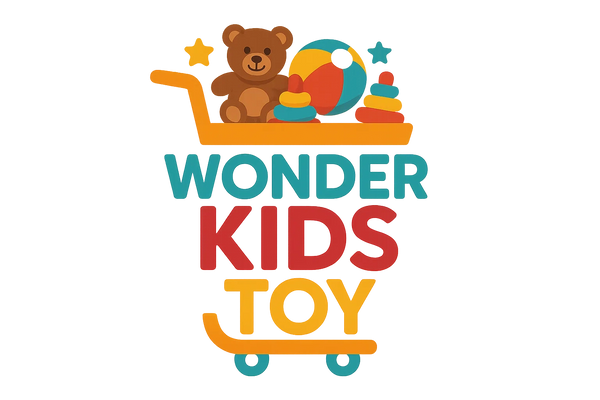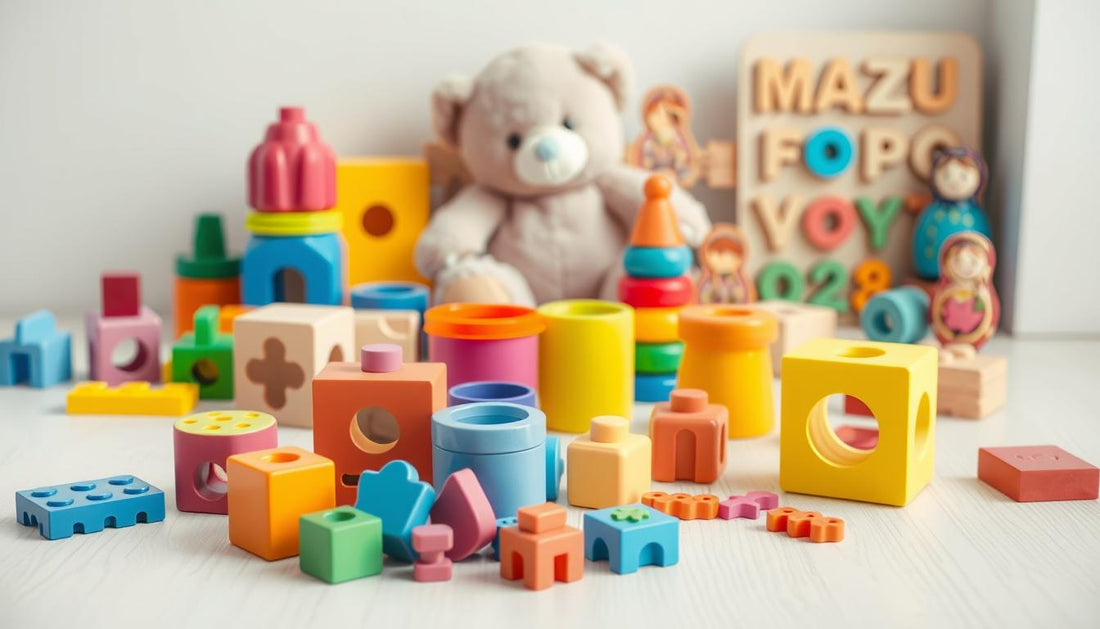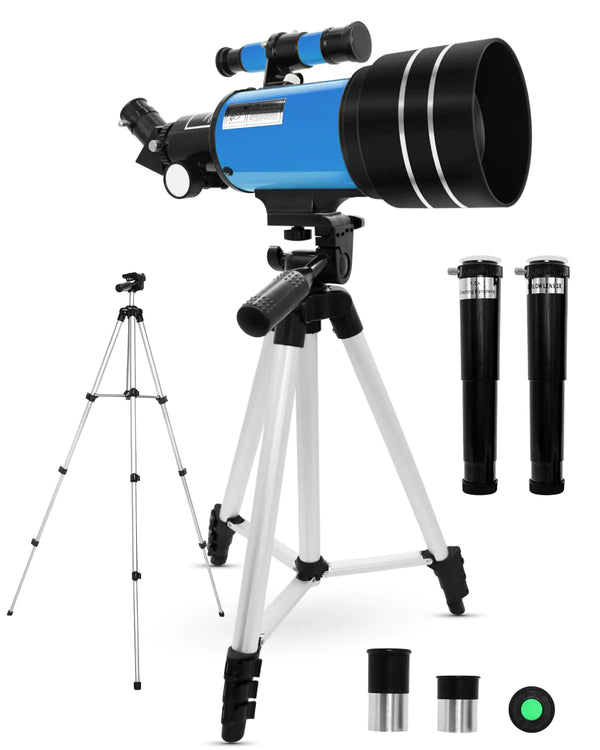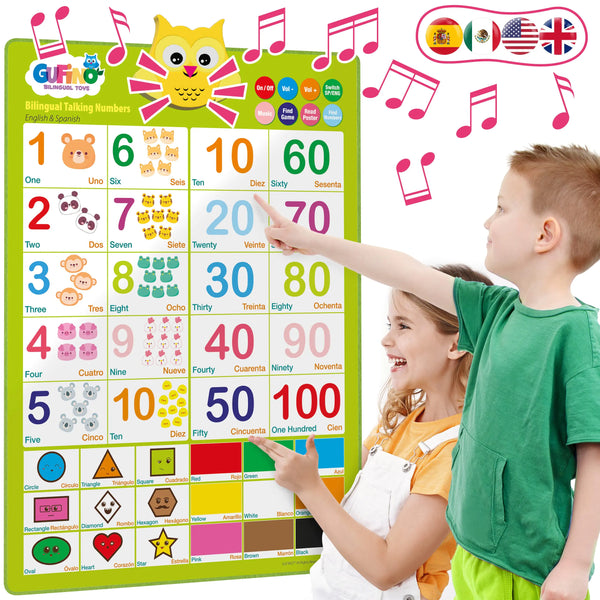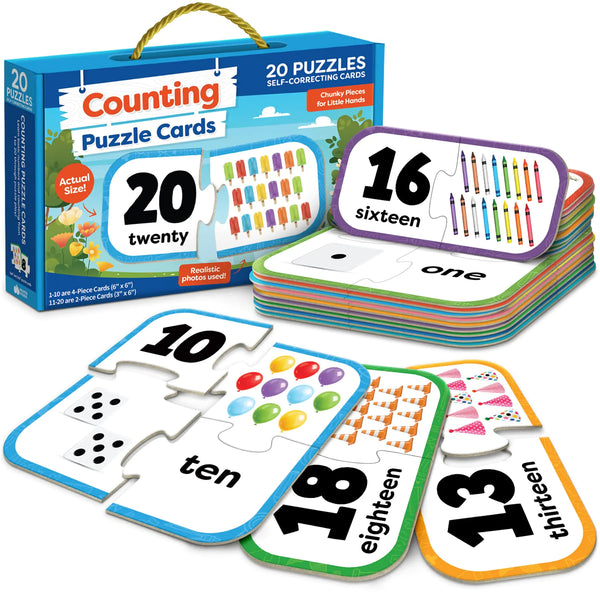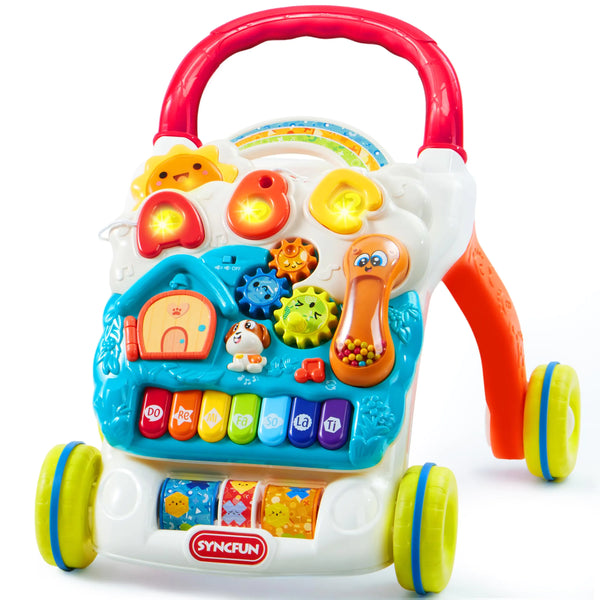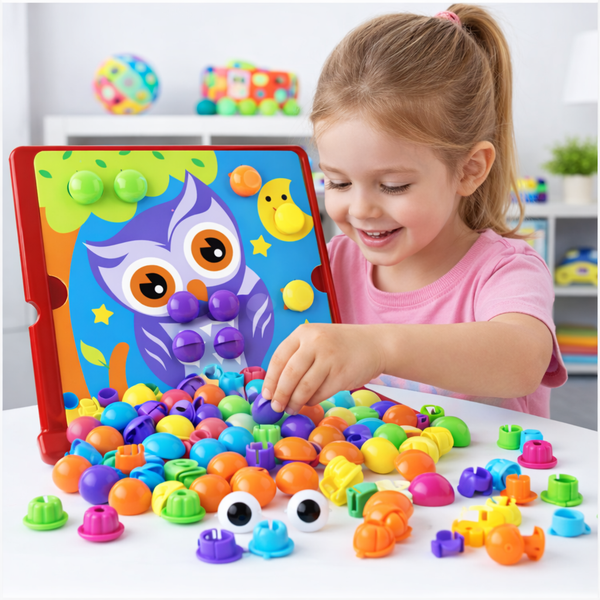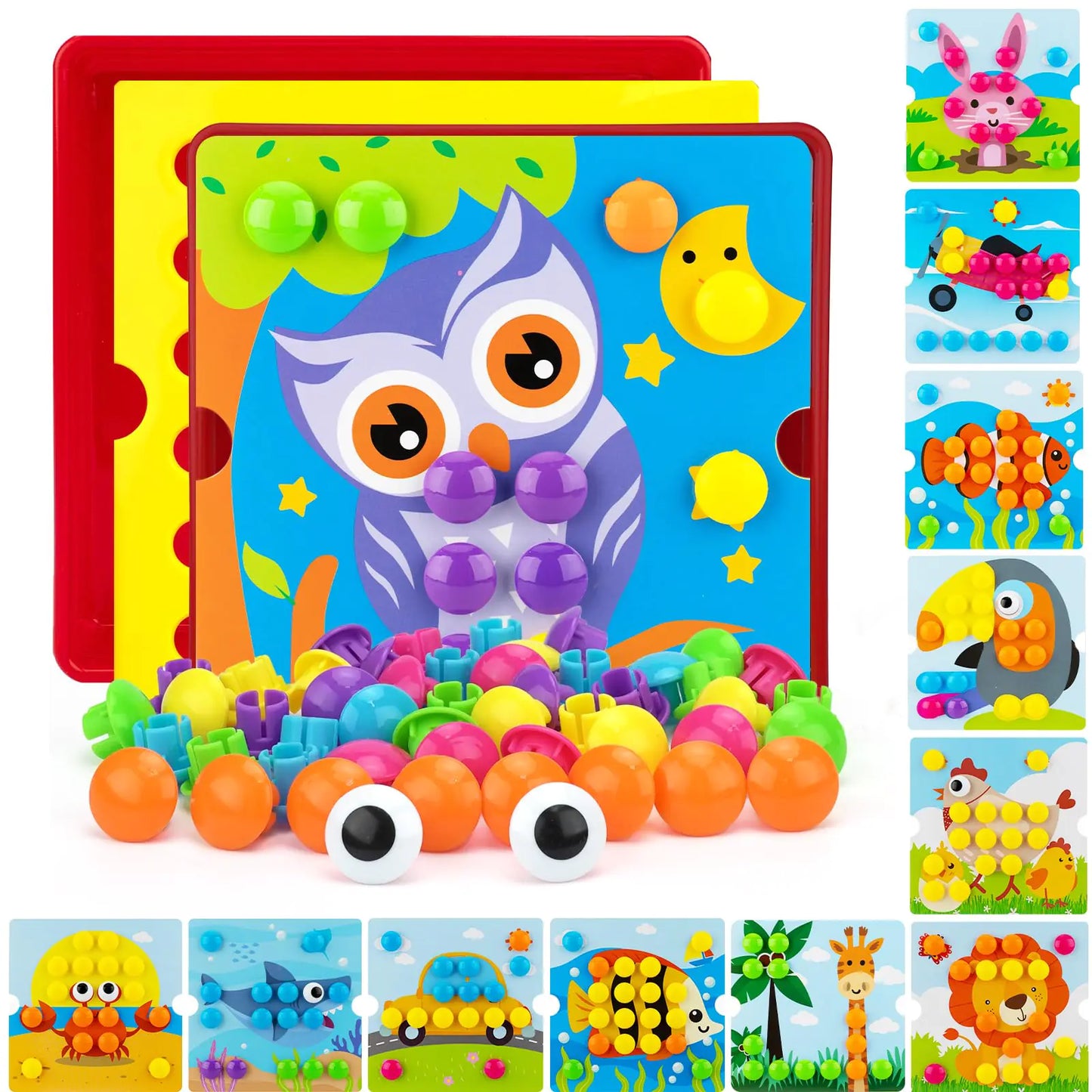Choosing the right learning toys for toddlers can be tough. At 2 years old, kids are full of curiosity. The right toys can help them grow in many ways.

I know how important it is to pick skill-building toys that fit their needs. In this article, we'll look at different types of toys. We'll also help you find the best ones for your child.
Key Takeaways
- Understanding the importance of cognitive development in 2-year-olds
- Exploring various categories of educational toys
- Guidance on choosing the best toys for your child's unique needs
- The role of STEM toys in early childhood development
- Tips for selecting toys that enhance physical and emotional development
Understanding the Developmental Needs of 2-Year-Olds
Two-year-olds grow in many ways, like thinking, moving, and feeling. They love to explore and learn from their world.
Cognitive Development Milestones
At two, kids start to get into their surroundings. They learn about cause and effect.
Problem-Solving Abilities
They begin to solve simple problems, like fitting puzzle pieces together. Toys that challenge them are beneficial.
Memory and Attention Span
Their memory and focus get better. They can remember simple games and follow instructions. Constructive play helps with these skills.
Physical Skills Development
Two-year-olds work on their motor skills. These skills are key to growing up.
Fine Motor Skills
They get better at small tasks, like stacking blocks or coloring. These activities improve their precision and dexterity.
Gross Motor Coordination
They also work on large muscle skills, such as running and jumping. Outdoor play is great for this.
Social and Emotional Growth
Social and emotional growth is vital. It helps with future relationships and emotional health.
Self-Awareness Development
Two-year-olds start to know themselves better. They understand their feelings and want to be independent.
Early Empathy and Sharing
They also show empathy and learn to share. These are essential social skills.
"Play is the highest form of research." - Albert Einstein
This quote shows how important play is for kids. It helps with social and emotional growth.
Why Educational Toys Matter for Toddler Development
As toddlers grow and learn, educational toys are key. They help with their brain, body, and feelings. These toys are more than fun; they help kids grow in many ways.
Brain Development Through Play
Play is essential for toddlers. It helps their brains grow and learn. Through play, kids make important connections in their brains.
Neural Connections and Pathways
Imaginative play helps kids make more brain connections. This play boosts problem-solving and social skills. Imaginative play lets kids try out different roles and scenarios. It helps them be creative and think in new ways.
Critical Learning Windows
Some toys teach basic ideas at the right time. This gets kids ready for school later on. For example, toys that teach shapes and colors help with math and reading.
Building Essential Life Skills
Educational toys also help kids learn essential life skills. They help with solving problems and getting along with others. This is because they encourage kids to think and work together.
Problem-Solving Foundations
Puzzles and shape sorters are great for learning to solve problems. They encourage kids to think critically and find answers. This helps them do well in school later.
Early Social Skills
Role-playing toys like dolls and action figures are suitable for social skills. Kids learn to share, work together, and talk nicely with others.
Creating Learning Foundations
Also, educational toys help lay the groundwork for learning. They introduce math, reading, and science basics. This makes learning fun and prepares kids for school.
Pre-Math and Pre-Reading Skills
Number lines and alphabet blocks are great for learning math and reading. They make learning fun and get kids ready for school.
Scientific Thinking Basics
Science kits and nature toys help kids learn about the world. They encourage kids to ask questions and gain a deeper understanding. This is the start of scientific thinking.
"Play is the highest form of research." - Albert Einstein
This quote shows how important play is for kids. It helps them be curious and creative.
| Skill Area | Educational Toy Examples | Benefits |
|---|---|---|
| Cognitive Development | Puzzles, Shape Sorters | Problem-solving, Critical Thinking |
| Social and Emotional Growth | Dolls, Action Figures | Role-playing, Social Skills |
| Pre-Math and Pre-Reading | Number Lines, Alphabet Blocks | Basic Math and Reading Skills |
Play and Learn: Top Educational Toys for Building Skills in 2-Year-Olds
The right educational toys can significantly help a 2-year-old's growth. They make playtime fun and educational. At this age, kids are naturally curious. The right toys can help them explore and learn more.
How Educational Toys Support Multiple Skill Areas
Educational toys are made to help in many ways. They boost thinking skills, physical abilities, and emotional growth.
Cross-Developmental Benefits
Toys that help in many areas are beneficial. For example, a shape sorter can improve problem-solving, hand-eye coordination, and fine motor skills.
Integrated Learning Through Play
Play is key for 2-year-olds to learn. Toys that spark imagination can boost thinking, creativity, and social skills.
Balancing Fun and Learning
Finding the right balance in toys is essential. Toys that are too educational can be dull. But toys that focus too much on fun might not teach enough.
Engagement Factors
Toys with different textures, colors, and sounds grab a 2-year-old's attention. These features encourage kids to play and learn.
Child-Led vs. Structured Play
Both types of play are vital. Child-led play lets kids learn at their own pace. Structured play helps with specific skills and new ideas.
Signs of an Effective Educational Toy
A good educational toy lasts long, grows with the child, and offers endless play. It should be adaptable and open-ended.
Longevity and Adaptability
Useful toys can be used in many ways and change with the child's interests. They keep kids engaged and learning for a long time.
Open-Ended Play
Toys that encourage open-ended play, like building blocks or dress-up clothes, let kids explore and create freely. They don't limit kids to a specific outcome.
Building Blocks and Construction Toys
Building blocks and construction toys are great for toddlers. They help with problem-solving and creativity. These toys are key for many toddlers, helping them learn and grow.
Wooden Blocks and Their Benefits
Wooden blocks are a classic choice. They encourage creative play and skill development. Toddlers improve their spatial awareness and fine motor skills.
- Melissa & Doug Wooden Block Sets: Known for their quality and durability, these blocks are designed to inspire creativity.
- Hape Maple Blocks: These blocks are made from high-quality maple wood and are designed to be safe and durable.
Magnetic Building Sets
Magnetic building sets teach basic engineering. They are very versatile, letting kids build complex things.
- Magna-Tiles Starter Sets: These sets are perfect for beginners, with a variety of shapes and colors.
- Tegu Magnetic Wooden Blocks: Combining wood and magnets, these blocks offer a unique building experience.
Foam and Soft Blocks
Foam and soft blocks are great for younger toddlers. They provide a safe and gentle way to build.
- Edushape Textured Blocks: These blocks have different textures, making them fun to touch.
- Mega Bloks Big Building Bag: This set includes many blocks and helps with fine motor skills.
In conclusion, building blocks and construction toys are vital for toddlers. They offer many benefits, supporting creative play and skill development.
Sensory Play Toys for Tactile Development
Touching the world is key for young children. Sensory play toys help them explore and grow. These toys make learning fun and exciting.
Sensory Bins and Materials
Sensory bins with things like kinetic sand, rice, or beans are great for toddlers. They're fun and teach essential skills like fine motor and hand-eye coordination.
Kinetic Sand Starter Kits
Kinetic sand is loved for its feel and shape. Starter kits come with tools and molds, making play even better.
Sensory Rice and Bean Play
Playing with sensory rice or beans is fun. Kids find hidden toys, which helps improve their touch and motor skills.
Textured Toys and Balls
Textured toys and balls add a new level to play. They help kids feel different textures, boosting their sense of touch.
Infantino Textured Multi Ball Set
The Infantino Textured Multi Ball Set features balls with varying textures and designs. It's great for kids to explore and play.
Fat Brain Toys Dimpl
Fat Brain Toys Dimpl comes in various shapes and sizes, each with a fun sound. It's a great way to learn about texture and sound.
Water and Sand Play Tools
Water and sand play tools are perfect for outside or sensory tables. They help kids learn and improve their motor skills.
Green Toys Sand Play Set
The Green Toys Sand Play Set is made from eco-friendly materials. It comes with molds and tools for safe and fun sand play.
Step 2 Water Tables
Step 2: Water Tables are great for water play. They have tools for pouring and mixing water, helping kids with their motor skills and creativity.
| Toy Type | Benefits | Examples |
|---|---|---|
| Sensory Bins | Enhances tactile awareness, fine motor skills | Kinetic Sand Starter Kits, Sensory Rice and Bean Play |
| Textured Toys and Balls | Develops sense of touch, encourages active play | Infantino Textured Multi Ball Set, Fat Brain Toys Dimpl |
| Water and Sand Play Tools | Promotes interactive learning, fine motor skills | Green Toys Sand Play Set, Step2 Water Tables |
Shape Sorters and Puzzles for Cognitive Growth
Shape sorters and puzzles are more than fun toys. They help toddlers grow in many ways. These tools improve problem-solving, hand-eye coordination, and spatial awareness. They prepare kids for future learning.
Simple Wooden Puzzles
Simple wooden puzzles are great for toddlers. They boost cognitive skills and fine motor abilities.
Melissa & Doug Chunky Puzzles
Melissa & Doug Chunky Puzzles have big, manageable pieces. They're perfect for little hands.
Hape Knob Puzzles
Hape Knob Puzzles have knobs for easy handling. They help improve fine motor skills.
3D Shape Sorters
3D shape sorters challenge toddlers to fit shapes into slots. They improve problem-solving skills.
Fisher-Price Baby's First Blocks
Fisher-Price Baby's First Blocks introduce young toddlers to shapes and colors.
Learning Journey Match & Learn Shape Sorter
The Learning Journey Match & Learn Shape Sorter teaches toddlers to match shapes and colors. It's an interactive toy.
Matching and Memory Games
Matching and memory games are great for toddlers' cognitive development.
The Learning Journey Match It! Games
The Learning Journey Match It! Games have matching cards. They improve memory and concentration.
Mudpuppy My First Memory Game
Mudpuppy My First Memory Game is for young toddlers. It has colorful cards that make learning fun.
| Toy Type | Benefits | Recommended Brands |
|---|---|---|
| Simple Wooden Puzzles | Develops cognitive skills and fine motor abilities | Melissa & Doug, Hape |
| 3D Shape Sorters | Improves problem-solving skills | Fisher-Price, Learning Journey |
| Matching and Memory Games | Enhances memory and concentration | The Learning Journey, Mudpuppy |
Language Development Toys
Toddlerhood is a key time for learning language. The right toys can help. At this age, kids start to understand and use words. Toys that engage them can boost their vocabulary and improve their communication skills.
Picture Books and Board Books
Picture books and board books are great for learning new words. They come in many formats, making learning fun and educational.
Interactive Touch-and-Feel Books
Interactive touch-and-feel books add a fun touch to learning. Kids can explore different textures while listening to stories.
First Word Books
First word books teach toddlers their first words. They have simple, colorful pictures that grab their attention.
Simple Word Games
Simple word games are a great way to improve language skills. They can be played with a variety of toys and materials.
First 100 Words Flash Cards
First 100 words flash cards are popular for learning new vocabulary. They are easy to carry and can be used anywhere.
Magnetic Word Builders
Magnetic word builders help kids build simple words. They promote spelling and vocabulary skills.
Musical Toys with Words and Sounds
Musical toys that include words and sounds make learning fun. They often have interactive features that encourage kids to join in.
LeapFrog Learning Friends 100 Words Book
The LeapFrog Learning Friends 100 Words Book teaches new vocabulary through stories and songs. It's a musical toy that makes learning fun.
VTech Musical Rhymes Book
The VTech Musical Rhymes Book introduces kids to nursery rhymes. It promotes language development through music and play.
| Toy Type | Features | Benefits |
|---|---|---|
| Picture Books | Colorful illustrations, simple text | Introduces new vocabulary, encourages early literacy |
| Interactive Touch-and-Feel Books | Textures to explore, engaging stories | Enhances sensory experience, promotes learning through touch |
| First Word Books | Simple, colorful illustrations | Teaches first words, enhances vocabulary |
Fine Motor Skill Toys
Toddlers need to develop fine motor skills. These skills help them do daily tasks well. Toys that help with stacking, nesting, lacing, and threading are great for this.
Stacking and Nesting Toys
Stacking and nesting toys improve hand-eye coordination and dexterity. They also help toddlers learn about space and solve problems.
Green Toys Stacker
The Green Toys Stacker is a stacking toy made from eco-friendly materials. It's safe and durable for young children.
Skoolzy Rainbow Stacking Peg Board Set
The Skoolzy Rainbow Stacking Peg Board Set boosts fine motor skills. It also teaches children about colors and sequencing.
Lacing and Threading Activities
Lacing and threading toys improve finger dexterity. They require children to thread objects onto a string, improving hand-eye coordination.
Melissa & Doug Lacing Beads
Parents love Melissa & Doug Lacing Beads. They come in many shapes and colors, making them fun and educational.
Hape Lacing Fruits
The Hape Lacing Fruits set is excellent for learning and fun. It helps children develop fine motor skills while teaching about different fruits.
Toys for Pincer Grip Development
Pincer grip development is key to fine motor skills. Toys that use tweezers or busy board activities are perfect for this.
Learning Resources Tweezers
Learning Resources Tweezers help children improve their pincer grip. They are used with small objects, making the activity fun and challenging.
Busy Board Activities
Busy Board Activities include tasks like zipping, buttoning, and lacing. These are great for improving fine motor skills.

Gross Motor Development Toys
Active play is key for toddlers. Many fun toys encourage this. These toys help improve coordination and balance.
Push and Pull Toys
Push and pull toys are great for toddlers. They help strengthen leg muscles and improve coordination.
Radio Flyer Wagon Walker
The Radio Flyer Wagon Walker supports your child as they learn to walk. It's designed to grow with your child, making playtime fun and active.
VTech Sit-to-Stand Learning Walker
The VTech Sit-to-Stand Learning Walker helps with early walking skills. It has interactive elements that make learning fun.
Ride-On Toys
Ride-on toys are perfect for active play. They promote gross motor development and coordination. They come in various designs, from simple to complex.
Little Tikes Cozy Coupe
The Little Tikes Cozy Coupe is a classic ride-on toy. It encourages active play and is durable, making it a favorite among toddlers.
Fisher-Price Corn Popper Push Toy
The Fisher-Price Corn Popper Push Toy is a fun ride-on toy. It makes fun sounds as children push it, encouraging them to keep moving.
Balls and Active Play Equipment
Balls and active play equipment are great for developing hand-eye coordination. They encourage children to run, throw, and catch, promoting physical activity.
Incredi-Balls Soft Fabric Balls
The Incredi-Balls Soft Fabric Balls are perfect for little hands. They are soft and safe, ideal for indoor and outdoor play.
Little Tikes Easy Score Basketball Set
The Little Tikes Easy Score Basketball Set is a fun way to encourage active play. It features an adjustable hoop, suitable for children of different ages and skill levels.
Pretend Play and Imagination Builders
Pretend play is key for toddlers, boosting their creativity and imagination. It lets them try out different roles and feelings. This is beneficial for their mental and emotional well-being.
Play Kitchens and Food Sets
Play kitchens and food sets are great for pretend play. They let toddlers act out cooking and serving. This helps improve their hand skills and eye coordination.
KidKraft Toddler Kitchen Sets
KidKraft's Toddler Kitchen Sets are safe and strong for little ones. They come with tools and play food. This makes playtime more fun.
Melissa & Doug Wooden Food Groups
Melissa & Doug's Wooden Food Groups are durable and fun. The wooden food items spark creative play.
Dolls and Action Figures
Dolls and action figures help kids learn to care for others. They also teach about different roles and jobs.
Fisher-Price Little People Sets
Fisher-Price Little People Sets are loved by toddlers. They have fun characters and accessories for play. These sets are safe and easy to use.
Soft Dolls for Toddlers
Soft dolls are perfect for toddlers. They are cuddly and safe for play. They come in many designs.
Dress-Up and Role Play Items
Dress-up clothes and role-play items boost creativity. They let toddlers try out different roles. This helps their thinking grow.
Simple Costume Sets
Simple costume sets are great for toddlers. They offer a wide variety of characters and jobs to play. They are made from safe, comfy materials.
Pretend Play Tool Sets
Pretend play tool sets encourage creative play. They let kids act out real-life tasks, such as fixing things. This is fun and educational.
| Toy Type | Benefits | Examples |
|---|---|---|
| Play Kitchens and Food Sets | Develops fine motor skills, encourages imaginative play | KidKraft Toddler Kitchen Sets, Melissa & Doug Wooden Food Groups |
| Dolls and Action Figures | Promotes nurturing skills, encourages role-playing | Fisher-Price Little People Sets, Soft Dolls for Toddlers |
| Dress-Up and Role Play Items | Encourages creativity, imagination, and role-playing | Simple Costume Sets, Pretend Play Tool Sets |
"Play is the highest form of research." - Albert Einstein
In conclusion, pretend play is essential for toddlers. The right toys and tools can make playtime better. Toys like play kitchens, dolls, and dress-up clothes help kids be creative and learn.
Art and Creative Expression Toys
Creative expression is key to toddlers' growth. As a parent, I know how vital it is to give my child the right tools. Art toys are not just fun; they help develop essential skills.
Toddler-Safe Art Supplies
Safety is top when choosing art supplies. Crayola My First Washable Markers are great because they're safe and easy to clean. Jumbo crayons and chalk also help with fine motor skills because they're big and easy to hold.
Crayola My First Washable Markers
These markers are made for little hands. They make it easy for toddlers to be creative and express themselves.
Jumbo Crayons and Chalk
Jumbo crayons and chalk are perfect for toddlers to practice drawing and coloring. They boost their creativity.
Finger Painting and Stamping
Finger painting is a fun way to encourage creativity. Washable finger paints are essential because they let kids play with colors and textures safely. Melissa & Doug Stamp Sets also help with fine motor skills and spark imagination.
Washable Finger Paints
These paints are safe and easy to clean. They're great for toddlers to enjoy finger painting without worry.
Melissa & Doug Stamp Sets
Stamp sets are a fun way for toddlers to create and learn. They promote creativity and imagination.
Modeling Clay and Dough
Play-Doh Starter Sets and Crayola Dough Tools are excellent for fine motor skills and creativity. Modeling clay and dough let toddlers shape and solve problems.
Play-Doh Starter Sets
These sets are made for young children. They offer a wide range of tools and colors to explore.
Crayola Dough Tools
Crayola dough tools complement modeling clay and dough well. They help toddlers create and shape different things.
Art and creative toys are vital for toddlers. They help with development and provide a way for parents to encourage creativity. By giving a variety of safe art supplies, parents support their child's growth.
"Art is the only way to run away without leaving home." - Twyla Tharp
STEM Toys for Early Science and Math Concepts
As a parent, I always look for toys that help my child learn STEM skills early. STEM toys introduce toddlers to basic science and math. This sets the stage for their future academic success.
Simple Counting Toys
Simple counting toys are great for teaching math to toddlers. They help kids learn numbers and basic math.
- Learning Resources Counting Bears: These colorful bears come in different sizes and colors. They make it easy for kids to learn counting and basic math.
- Number Puzzles and Blocks: Number puzzles and blocks help kids recognize numbers and understand their order.

Cause and Effect Toys
Cause-and-effect toys teach toddlers about how things work. They help kids understand the world around them.
- Battat Pop-Up Pals: This toy is an excellent example of a cause-and-effect toy. Kids learn about causality by popping up characters.
- Fisher-Price Laugh & Learn Toys: These toys teach kids about cause and effect. They also make learning fun and laughter-filled.
Nature and Science Exploration Kits
Nature and science kits encourage kids to love science and nature early on.
- Magnifying Glasses for Toddlers: A magnifying glass is a simple yet effective tool. It encourages kids to explore the natural world.
- Bug Catchers and Nature Collection Tools: Bug catchers and nature collection tools help kids learn about insects and other creatures. They promote a love for nature.
Navigating Online Toy Stores for Quality Educational Toys
Finding the right online toy stores for toddlers can be tough. Parents need to find trusted retailers, read reviews, and compare prices. This ensures they get the best toys for their child's growth.
Trusted Educational Toy Retailers
Choosing the right online stores is key. Specialty stores focus on educational toys, knowing what's best for different ages and needs. General retailers may have more options, but the quality can be inconsistent.
Specialty Stores vs. General Retailers
Specialty stores are well-versed in educational toys. They offer great advice and picks. General retailers might be cheaper and have more choices, but the quality can vary.
Reading Reviews and Ratings
Reviews from other parents are beneficial. Look for feedback on durability, educational value, and how fun the toy is for kids.
Price Comparison and Value Assessment
It's smart to compare prices. Think about how long the toy will last and its educational benefits. This helps find the best deal.
Investment Toys vs. Consumable Toys
Some toys last a long time, making them a smart buy. Others, like art supplies, need to be replaced often. Knowing the difference helps you choose wisely.
Sales and Seasonal Buying Tips
Watch for sales and discounts. Many retailers offer big deals during holidays or special events.
Subscription Boxes for Toddler Development
Subscription boxes are great for toddlers. They bring new toys and activities. These services pick products based on age and developmental stage.
Age-Appropriate Subscription Services
Choose services that match your child's age and needs. They should change their offerings as your child grows. This keeps the toys and activities interesting and challenging.
Evaluating Subscription Quality
When choosing a subscription, consider the product quality and variety. Make sure it fits your child's interests and needs.
Matching Toys to Your Child's Unique Interests and Temperament
Choosing the right toys for your child is key to their growth. Every child is unique, with their likes and ways of exploring the world.
Observing Play Preferences
Watching how your child plays can tell you a lot about them. Some kids love to move around, while others prefer to focus.
Active vs. Focused Players
Active kids enjoy toys that let them run around, like push and pull toys or ride-on toys. Focused kids might like toys that challenge their brains, like puzzles or shape sorters.
Sensory Seekers vs. Sensory Sensitive
Some kids love toys with different textures, sounds, or sights. Others need toys that are gentle on their senses.
Supporting Special Interests
Many kids have special interests that help pick toys. For example, some might love animals, while others are into vehicles.
Animal Enthuisiasts
Kids who love animals enjoy stuffed animals or animal figurines. These toys are fun and teach them about animals.
Vehicle and Transportation Lovers
Kids who love vehicles like toy cars or train sets can improve their fine motor skills and imagination.
Challenging vs. Comforting Toys
It's essential to have both challenging and comforting toys. Challenging ones help with problem-solving, while comforting ones offer emotional security.
When to Introduce Challenging Concepts
It's vital to introduce challenging toys when your child is ready. Watch for signs that they can handle more complex toys.
Comfort Toys for Emotional Development
Comfort toys, like soft toys or blankets, are key to emotional growth. They give kids reassurance and comfort.
Digital and Tech Toys: Finding the Right Balance
Parents face a challenge with digital toys. They need to balance screen time with other activities. It's essential to use technology wisely to ensure children have a well-rounded play experience.
Age-Appropriate Electronic Toys
Electronic toys can be fun and educational. LeapFrog Learning Systems offers products for different ages and learning needs. Simple cameras and music players help with creativity and skill development.
LeapFrog Learning Systems
LeapFrog systems make learning fun. They teach children reading, problem-solving, and other essential skills.
Simple Cameras and Music Players
These tools spark creativity. They're great for introducing technology to young kids.
Screen Time Recommendations
The American Academy of Pediatrics (AAP) has guidelines for toddlers. They stress quality over quantity. Knowing these guidelines helps parents find a healthy balance.
AAP Guidelines for Toddlers
The AAP says kids under two should only watch video calls. Kids 2-5 should watch 1 hour of educational shows daily.
Quality vs. Quantity of Screen Time
It's not just about how long kids watch screens. The content should be educational and interactive.
Interactive vs. Passive Digital Experiences
Playing with digital toys together can make them more educational. Switching between digital and physical play keeps things interesting.
Co-Play with Digital Toys
Playing with kids during digital activities boosts their learning.
Transitioning Between Digital and Physical Play
Mixing digital and physical play keeps things exciting. It prevents too much screen time.
Safety Considerations for Toddler Toys
When it comes to toddler toys, safety is my top priority. Ensuring that the toys my child plays with are safe is key to their health and development.
Choking Hazards and Size Considerations
Choking hazards are a significant risk for toddlers. Toys with small parts can be dangerous if swallowed.
- Use the toilet paper roll test to check if a part is too small.
- Avoid toys with small parts that can be easily detached.
Using the Toilet Paper Roll Test
If a toy or part fits inside a toilet paper roll, it's too small for my toddler.
Material Safety and Non-Toxic Options
It's also essential to consider the materials used in toys. Opting for non-toxic options is vital.
- Look for certifications like ASTM or EN71.
- Choose toys made from natural materials when possible.
Durability and Construction Quality
Durable toys are safer as they are less likely to break into small parts.
- Regularly inspect toys for loose parts.
- Clean and sanitize toys frequently.
Organizing and Rotating Toys for Maximum Engagement
As a parent, I've found that organizing and rotating toys is key. It keeps my toddler engaged and learning through play. A tidy play space reduces clutter and helps kids focus on what's available.
Creating Accessible Play Spaces
To make play spaces easy to use, consider using low shelves and toy storage that kids can easily reach. This boosts independence and makes cleaning up simpler. Visual organization systems, like bins and baskets with pictures, help kids find toys quickly.
Low Shelves and Toy Storage
- Choose sturdy, low-level shelving units.
- Label storage bins with pictures or simple words.
Visual Organization Systems
- Use baskets or bins to sort toys.
- Put picture labels on bins for easy spotting.
Toy Rotation Systems
Rotating toys keeps play exciting and prevents boredom. You can switch toys monthly or seasonally to keep things fresh.
Monthly Rotation Schedule
Plan which toys will be out each month. Store unused toys in labeled containers.
Seasonal Toy Changes
Switch toys with the seasons to match current interests. For example, use outdoor toys in spring.
Combining Toys for Extended Learning
Creating themed play stations or multi-toy play scenarios boosts learning and fun.
Creating Themed Play Stations
- Set up a kitchen or doctor's office play area.
- Use a variety of related toys to encourage imaginative play.
Multi-Toy Play Scenarios
Combine different toys for complex play scenarios. For example, use blocks with toy vehicles.
Investing in Your Child's Development Through Play
Choosing educational toys is key to helping your child grow. These toys help with thinking, moving, and feeling. They make learning fun and exciting for 2-year-olds.
These toys help kids solve problems and think creatively. They lay the groundwork for school and learning for life. Finding the right toys can be tough, but knowing their value helps you make good choices.
Using educational toys in playtime helps your child grow and strengthens your bond. Look for toys that are both fun and educational. They should challenge your child to learn and grow.
FAQ
What are the best educational toys for 2-year-olds?
The best toys for 2-year-olds help with many skills. They support thinking, fine motor skills, and creative play. Examples include building blocks, shape sorters, and toys that encourage sensory exploration.
How do I choose the right educational toys for my child?
Think about what your child likes and needs. Watch how they play and pick toys that are fun, challenging, and engaging.
What is the importance of sensory play toys for toddlers?
Sensory toys are key for toddlers. They help with touch, understanding the world, and exploring. Examples include sensory bins, textured toys, and tools for water and sand play.
How can I ensure the toys I buy are safe for my child?
Check toys for choking hazards and use the toilet paper roll test. Choose non-toxic materials. Also, check toys for loose parts and keep them clean and sanitized.
How often should I rotate my child's toys?
Rotating toys keeps play exciting and prevents boredom. Try changing toys monthly or seasonally. Create play spaces and mix toys to create themed play areas.
What is the role of STEM toys in early learning?
STEM toys introduce basic science and math. They help prepare for school success. Examples include counting toys, cause and effect toys, and nature and science kits.
How can I balance digital and tech toys with other play activities?
Follow screen time guidelines from the American Academy of Pediatrics. Choose interactive and educational digital content. Play with your child and switch between digital and physical play to keep a balance.
What are some tips for organizing and storing toys?
Use low shelves and visual systems for play spaces. Rotate toys and store them in labeled containers. This keeps your space tidy and organized.

